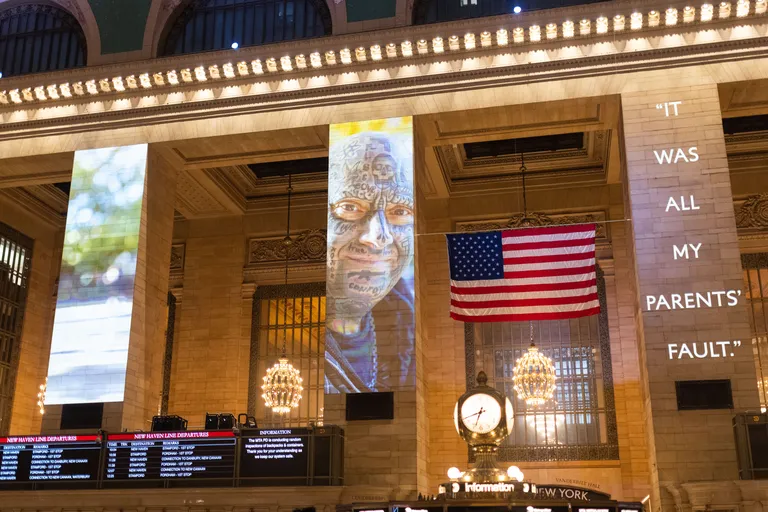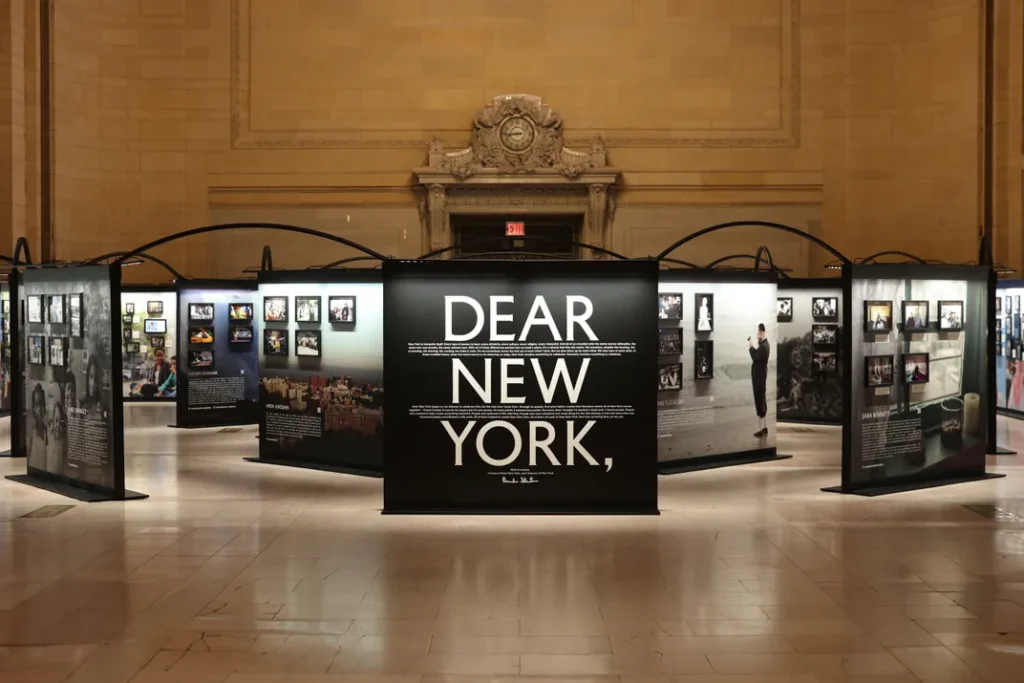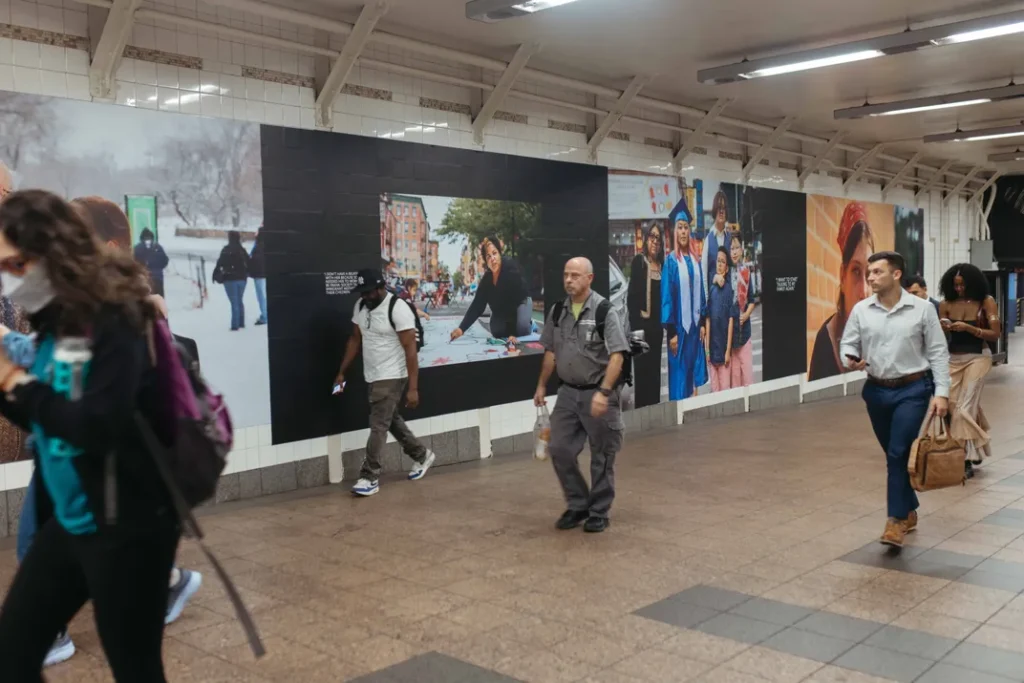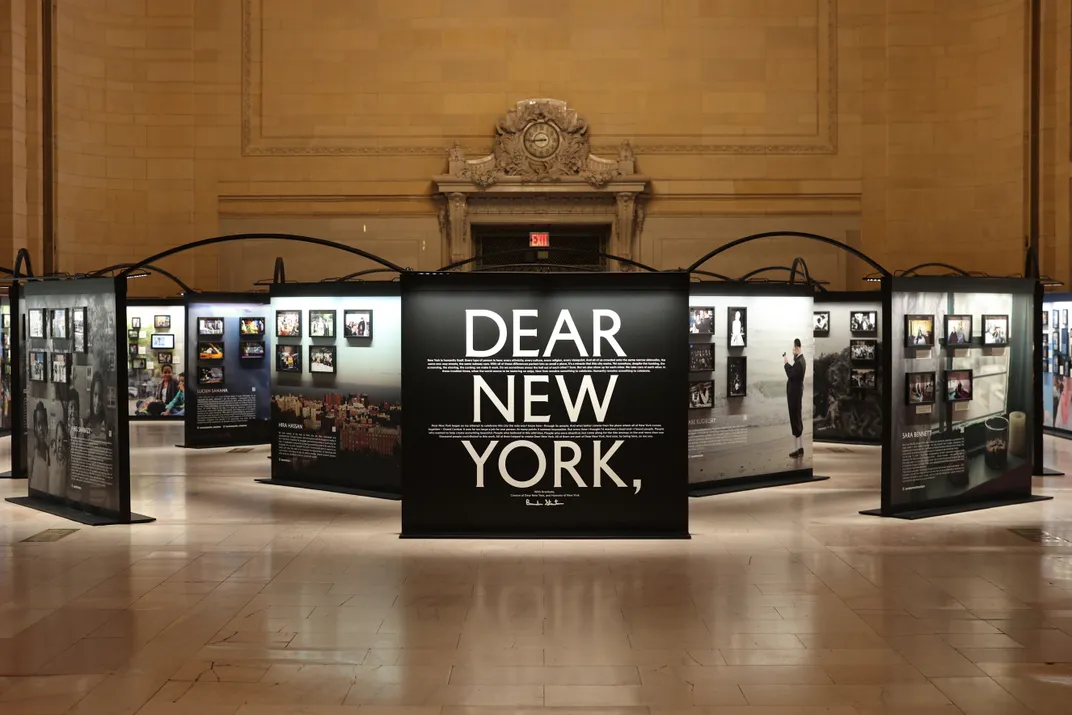
For the first time in decades, New York City’s Grand Central Terminal has been cleared of advertisements. In their place is Dear New York, a massive photographic art installation created by Brandon Stanton, the artist behind Humans of New York.
Stanton started Humans of New York, a portrait photography project, in 2010. He posted portraits of New Yorkers on a blog, then included quotes from his conversations with the subjects. Stanton’s work took off, reaching new heights of popularity when he found an audience on Instagram. (His account now has 12.8 million followers.) Stanton expanded his project internationally, and he’s published four related books. He has photographed some 10,000 New Yorkers.

In a statement, Stanton calls Dear New York “a love letter to the people of this city,” staged in the iconic Midtown train station “where the entire city comes together.” Projected onto the walls of the terminal’s main concourse are 50-foot-tall photographs and interview quotes. More portraits are displayed on the terminal’s 150 digital screens, which normally display ads and transit announcements. And still more portraits have been pasted all over the walls of the terminal’s subway station.
During the installation’s two-week takeover of Grand Central, a lineup of students, faculty and alumni from the Juilliard School will play a grand piano in the main concourse. Also, a companion community art showcase is on display in the station’s Vanderbilt Hall: It features works from local artists and more than 600 New York City Public School students.

The Dear New York installation actually emerged from Stanton’s new book of the same name. Dear New York, the book, is a forthcoming nearly 500-page volume of New Yorkers’ portraits and stories—in the style of the primary Humans of New York. The money Stanton made from the Dear New York book funded the Dear New York installation. Any additional proceeds from the book will be donated to local charities, Stanton tells NY1. “So it’s designed to be an artistic and financial gift to the city.”
The exhibition is still running until October 20th.
With thank to smithsonianmag.com

